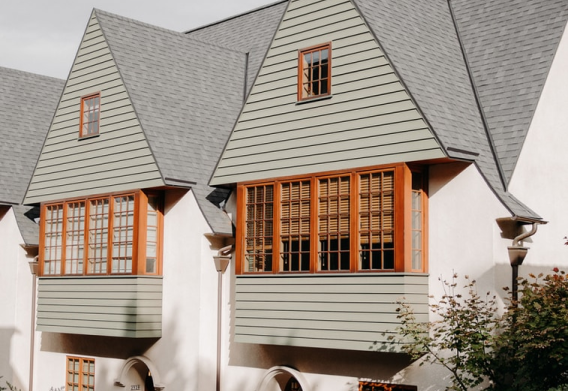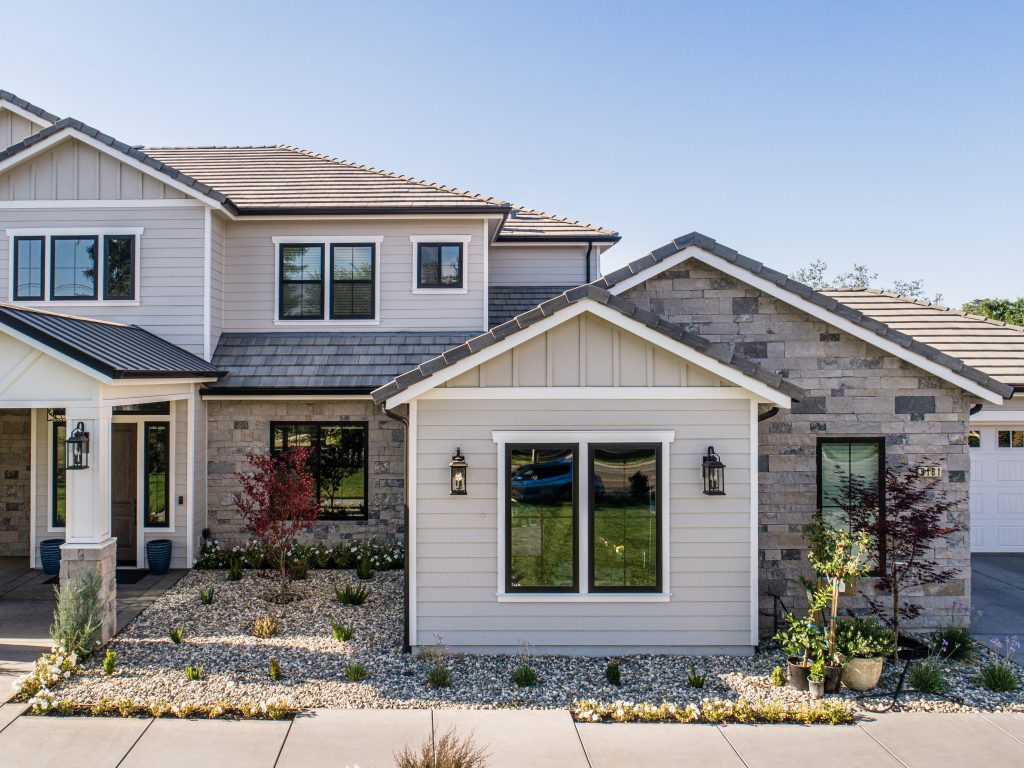Energy efficiency stands as a cornerstone in modern architectural practices. It’s not just about reducing utility bills; it’s a commitment to a sustainable future. Interior design, often perceived as mere aesthetics, plays a pivotal role in this energy-saving endeavor. By making informed design choices, homeowners and architects can significantly influence a building’s energy consumption. Interestingly, a study by the U.S. Department of Energy found that strategic interior design can reduce energy usage by up to 20%. This intertwining of design and efficiency forms the crux of our discussion.
The Basics of Energy Efficiency in Buildings

At its core, energy efficiency in buildings revolves around optimizing energy use. It’s about achieving the desired interior comfort with minimal energy consumption. Insulation stands paramount in this equation. Proper insulation reduces the need for heating and cooling, thereby conserving energy. Thermal bridging, another critical concept, refers to areas in a building that allow heat transfer. Addressing these bridges can prevent unwanted heat loss or gain. Ventilation, too, cannot be overlooked. While it ensures fresh air circulation, it must be controlled to avoid energy wastage. Did you know? Buildings account for nearly 40% of global energy consumption. Hence, understanding these basics isn’t just beneficial—it’s imperative for a greener planet.
The Role of Siding in Energy Efficiency
Siding, often the unsung hero of building exteriors, plays a vital role in energy conservation. It’s not just about curb appeal. Siding acts as a building’s protective shield, guarding against external temperature fluctuations. This barrier function directly impacts a structure’s thermal performance. For instance, insulated siding can bolster a building’s R-value, a measure of thermal resistance. A higher R-value means better insulation and, consequently, enhanced energy efficiency.
Material choice in siding is paramount. While wood offers natural insulation, materials like vinyl and fiber cement provide durability with energy-saving benefits. Interestingly, the National Association of Home Builders found that insulated vinyl siding can reduce thermal bridging by up to 25%. This reduction translates to significant energy savings over a building’s lifespan.
Moreover, siding’s color and finish can influence energy consumption. Darker shades absorb more heat, potentially increasing cooling needs in warmer climates. Conversely, lighter hues reflect sunlight, offering a cooling effect. It’s a delicate balance of aesthetics and functionality.

Interior Design Choices and Their Impact
Interior design, while often celebrated for its aesthetic prowess, wields significant influence over a building’s energy dynamics. Beyond mere visual appeal, design choices can either augment or diminish energy efficiency, impacting both ecological footprints and utility bills.
Color Choices
Colors don’t just set a room’s mood; they dictate its temperature. Light shades, with their reflective properties, can repel sunlight, maintaining cooler interiors. In contrast, dark hues absorb heat, potentially elevating room temperatures. A study from the Lawrence Berkeley National Laboratory revealed that light-colored roofs use up to 40% less energy during summer than their darker counterparts. This principle extends to interior colors as well.
Material Selection
Material choices in interior design are pivotal for energy conservation. Wood, with its natural insulating properties, can regulate room temperatures effectively. Metals, on the other hand, are heat conductors, potentially affecting room warmth. Natural fibers, like wool or cotton, offer breathability, while synthetics might trap heat. It’s intriguing to note that cork, a sustainable material, not only offers acoustic insulation but also thermal benefits, making it a favored choice among eco-conscious designers.
Furniture Placement and Room Layout
The spatial arrangement within a room can significantly influence its energy dynamics. Furniture placed against exterior walls can impede heat circulation, leading to cold spots during winters. Conversely, optimizing furniture layout to allow unobstructed airflow can enhance ventilation. Moreover, harnessing natural light reduces dependency on artificial lighting, slashing energy consumption. A well-placed mirror can amplify sunlight, illuminating spaces naturally and efficiently.
In essence, every design choice, subtle or pronounced, contributes to a building’s energy narrative. Recognizing this interplay is crucial for crafting interiors that are both visually compelling and energy-efficient.
Innovative Interior Design Solutions for Enhanced Energy Efficiency
In the realm of interior design, innovation continually intersects with sustainability. Modern solutions not only elevate aesthetics but also champion energy efficiency, marrying form with function.
Smart Thermostats and Home Automation
The advent of smart thermostats has revolutionized energy management in interiors. These devices, using AI algorithms, learn occupants’ preferences, adjusting temperatures for optimal comfort and efficiency. Coupled with home automation systems, they can synchronize with blinds or fans, optimizing energy use. A report by the Energy Saving Trust highlighted that smart thermostats could save households up to 20% on heating costs.
Green Walls and Vertical Gardens
Biophilic design, which integrates nature into built environments, has seen the rise of green walls and vertical gardens. Beyond their visual allure, these living installations offer insulation, reducing the need for artificial cooling or heating. Additionally, they act as natural air purifiers, enhancing indoor air quality. In fact, a study from the University of Technology Sydney found that indoor plants can reduce air pollutants by up to 75%.
Energy-Efficient Lighting Choices
Lighting consumes a significant chunk of a building’s energy. Transitioning to LED lights, which use up to 85% less energy than traditional bulbs, can drastically cut down consumption. Furthermore, LEDs have a longer lifespan, reducing the frequency of replacements and waste.
Incorporating these innovative solutions into interior design not only paves the way for energy-efficient spaces but also fosters a sustainable living ethos.

Case Study: A Real-World Example of Energy-Efficient Interior Design
In the vast landscape of energy-efficient design, real-world applications provide invaluable insights. Let’s delve into some exemplary residences and projects that have seamlessly integrated energy efficiency with impeccable design.
This residence showcases the elegance of 1×4 Nickel Gap Clear Heart Cedar Siding. Paired with Boral TruExterior 1×10 Square Channel Siding, the combination offers both aesthetic appeal and enhanced insulation. Notably, Boral’s TruExterior products, as detailed on truexterior.com, are renowned for their durability and sustainability.

A beautiful Carmichael home stands out with its mix of James Hardie Board and Batten and Horizontal Lap siding. The combination not only offers visual diversity but also ensures energy efficiency.
A striking blend of T1-11 Main Siding with Cedar 1×6 Tongue and Groove accents for the front and entry, this residence exemplifies the fusion of traditional materials with modern design.

Trespa HPL Cladding adorns a grocery chain, reflecting the growing trend of energy-efficient solutions in commercial spaces. For more on Trespa’s innovative offerings, one can visit trespa.com.
James Hardie’s products take center stage here. The residence features James Hardie Lap Siding, known for replicating traditional wood lap siding’s aesthetics. Its resistance to rot, warping, and cracking, as highlighted on jameshardie.com, ensures longevity with minimal maintenance. The gable accentuates with James Hardie Board and Batten, adding a touch of architectural finesse.

This large multi-family housing project is a testament to modern design meeting energy efficiency. The James Hardie Reveal Panel system, paired with varied horizontal lap siding sizes, offers a sleek, contemporary look that’s as energy-efficient as it is eye-catching.
The intersection of interior design and energy efficiency is undeniable. As showcased in our case studies, design choices significantly influence a building’s energy dynamics. From the reflective properties of light-colored interiors to the insulating prowess of specific siding materials, every decision carries weight. It’s worth noting that buildings consume nearly 40% of global energy. Thus, integrating energy-efficient practices isn’t just an architectural trend; it’s a global imperative. As designers and architects, the onus is on us to craft spaces that are both aesthetically pleasing and sustainably sound. The future of design lies in this harmonious blend, setting the stage for a greener, more energy-conscious world.

